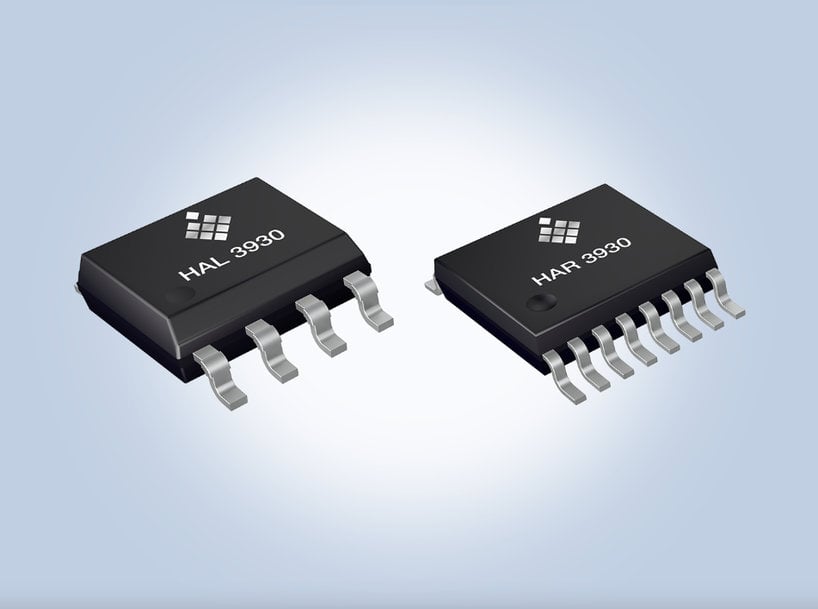www.magazine-industry-usa.com
30
'23
Written on Modified on
TDK RELEASES NEW ASIL C READY STRAY-FIELD ROBUST 3D HAL® SENSORS
HAL 3930-4100 (single die) and HAR 3930-4100 (dual die) are precise Hall-effect position sensors with robust stray-field compensation capabilities with PWM or SENT output interfaces.

TDK Corporation further extends its Micronas 3D HAL® position sensor family with new HAL 3930- 4100 and HAR 3930-4100 for automotive and industrial applications. Both sensors empower precise position detection with robust stray-field compensation capabilities, offering flexible digital output interfaces in the form of PWM or SENT. The single die devices are defined as SEooC (Safety Element out of Context) ASIL C ready according to ISO 26262 and can be integrated in automotive safety-related systems up to ASIL D. The sensors are suitable for applications such as steering angle position detection, transmission position detection, shifter position detection, accelerator and brake pedal position detection. The start of production is planned for January 2024; samples are now available on request.
Both sensors offer user-configurable PWM or SENT output interfaces, which enhances adaptability. Additionally, the sensors introduce a switch output with versatile high-/low-side switch configurations. The switch signal originates from calculated position data or other sources along the device's signal path, such as temperature or magnetic-field amplitude. As ASIL C ready devices, HAL 3930-4100 and HAR 3930-4100 both conduct self-tests when starting up and during regular operation to enhance its reliability. These tests are designed to either prevent the sensor from giving incorrect readings or to report errors either via the SENT interface according to the SENT standard or via the PWM interface.
HAR 3930-4100 is the dual-die version of the HAL 3930-4100, providing full redundancy. It is equipped with two independent dies stacked on top of each other, separated both mechanically and electrically. These two dies, while measuring nearly identical magnetic fields, ensure synchronized output signals. This redundancy design, housed within a single package, accomplishes the dual feat of reducing system costs and elevating overall reliability. Smaller PCBs and fewer solder joints further bolster system dependability. The HAR 3930-4100 is conveniently available in a compact SSOP16 package, while the single-die variant is housed in a SOIC8 package.
HAL 3930-4100 and HAR 3930-4100 offer an extensive range of measurement capabilities, encompassing 360° angular measurements, linear movement tracking, and the provision of 3D position data for magnets. This 3D position information can be transmitted through SENT or two PWM outputs. Moreover, the sensors feature a modulo function, primarily tailored for chassis position sensor applications. This function facilitates the partitioning of the 360° measurement range into smaller, more precise segments like 90°, 120°, and 180°.
Furthermore, the on-chip signal processing functionality computes up to two angles from magnetic-field components, converting them into a digital output signal. This flexible feature empowers customers to fine-tune essential parameters such as gain, offset, reference position, and more through non-volatile memory programming, ensuring seamless alignment with their specific magnetic circuitry requirements.
Main applications
- Steering angle position detection
- Gear shifters
- Brake stroke position sensors
- Position detection in transmission systems
- Park lock actuators
Main features and benefits
- Stray-field robust 360°C rotary and linear position detection up to 35 mm
- High robustness against mechanical misalignment between sensor and magnet in rotary setups
- Optimized design supporting rotary setups together with ferrite magnets
- ASIL C ready SEooC according to ISO 26262 to support functional-safety applications
- Suitable for automotive applications, due to a wide ambient temperature range from -40 °C to 160 °C

